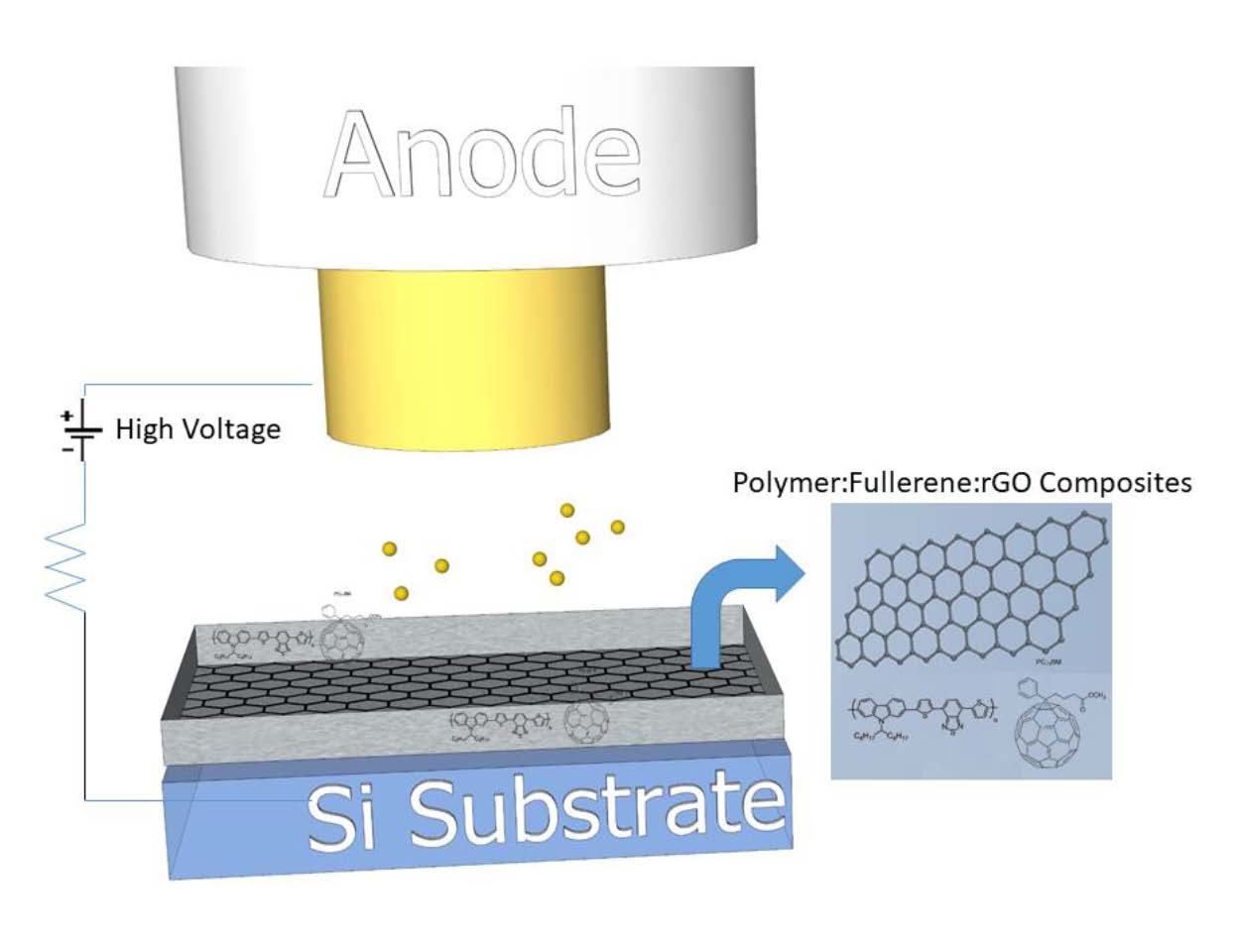Hydroiodic acid (HI) treated - reduced graphene oxide (rGO) ink/conductive polymeric composites are considered as promising cold cathodes in terms of high geometrical aspect ratio and low field emission (FE) threshold devices. In this study, four simple, cost-effective, solution-processed approaches for rGO-based field effect emitters were developed, optimized and compared; rGO layers were coated on a) n+ doped Si substrate, b) n+-Si/P3HT:rGO, c) n+-Si/PCDTBT:rGO and d) n+-Si/PCDTBT:PC71BM:rGO composites, respectively. The fabricated emitters were optimized by tailoring the concentration ratios of their preparation and field emission characteristics. In a critical composite ratio, FE performance was remarkably improved compared to the pristine Si, as well as n+-Si/rGO field emitter. In this context, the impact of various materials, such as polymers, fullerene derivatives, as well as different solvents on rGO function reinforcement and consequently on FE performance upon rGO-based composites preparation was investigated. The field emitter consisted of n+-Si/PCDTBT:PC71BM(80%):rGO(20%)/rGO displayed a field enhancement factor of ∼2850, with remarkable stability over 20h and low turn-on field in 0.6V/μm. High-efficiency graphene-based FE devices realization paves the way towards low-cost, large-scale electron sources development. Finally, the contribution of this hierarchical, composite film morphology was evaluated and discussed.

